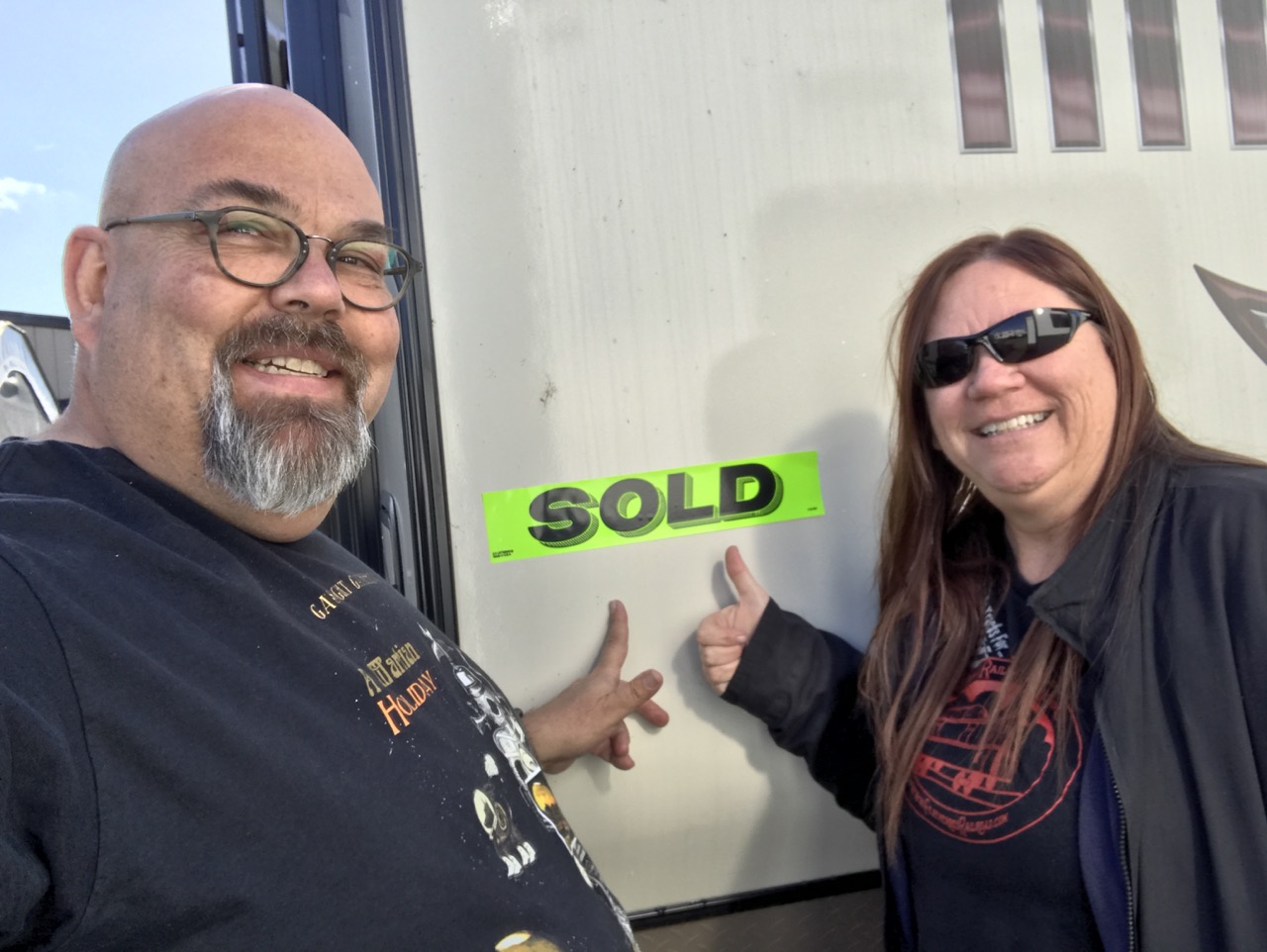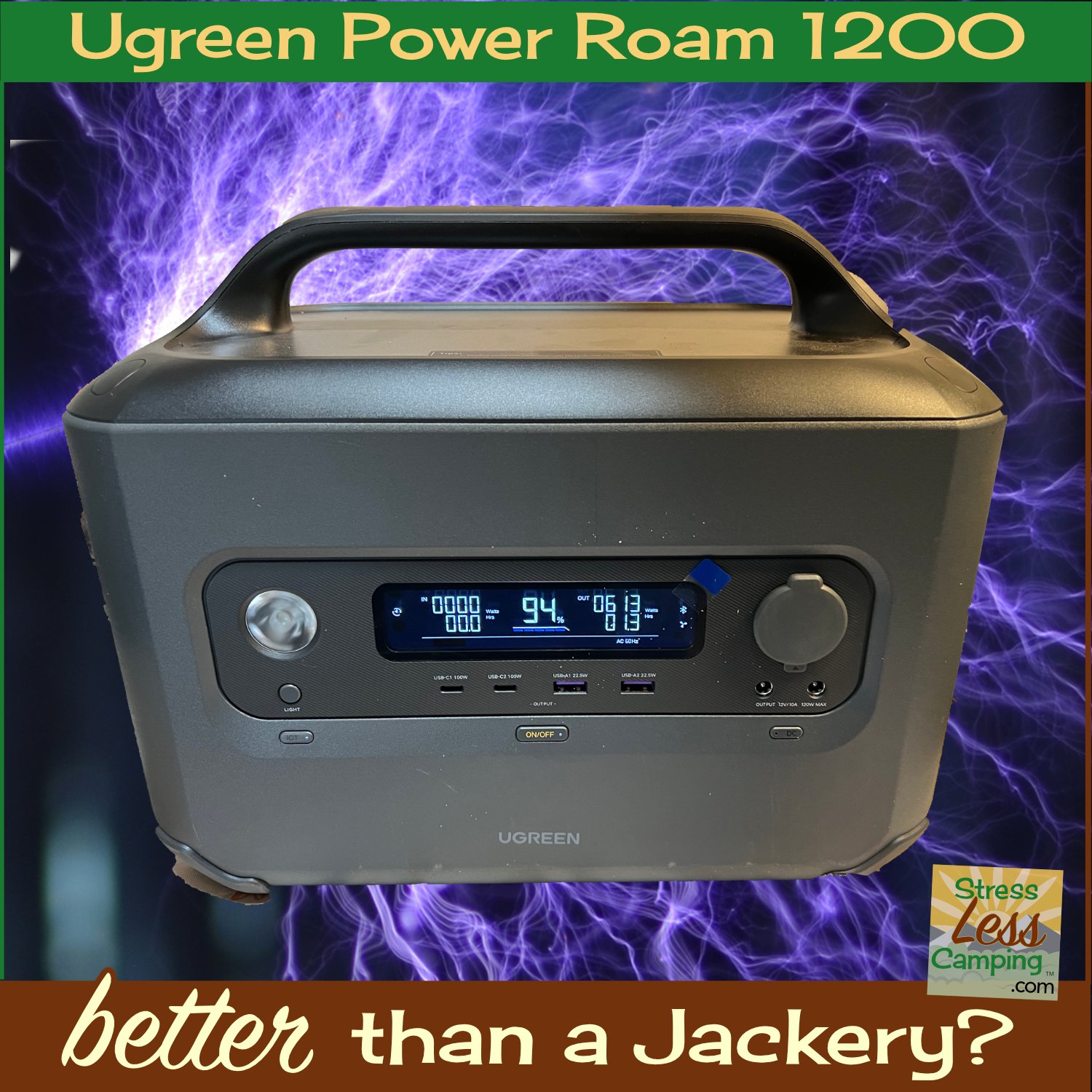GoPower! Duralight 100 solar suitcase review
Today’s RV gadget review is of GoPower’s Duralite 100 watt portable solar kit. I have had a GoPower portable solar kit since I got my RV new in 2016 and our second camping trip was on the beach over Christmas where the only power we got was from those solar panels.
Since then I have been hooked on free power from that ball of fire in the sky. Even my original solar panels, a GoPower 80 watt solar suitcase, showed me how much better camping is when your awning isn’t in danger of touching your neighbor’s RV. While that original panel was 80 watts and served us well, these new Duralite panels are 100 watts each and GoPower sent us that panel plus an expansion panel as well for a total of 200 watts.
I’ve been writing about a number of power-consuming devices lately and stating that they’re great for boondocking without telling the whole story - somehow you have to get the power to the devices. There has been the Jackery 1500 that I reviewed but there’s a much better way and these panels are part of that story.
Mentioned in this article
What is the GoPower! Duralight solar suitcase?
The GoPower Duralite 100 watt solar kit consists of two 50 watt monocrystalline panels in a folding case that delivers 100 watts of solar at 5.06 amps and 19.8 volts. This whole kit weighs far less than my tried-and-true older GoPower kit at just 8.4 pounds yet has a very high quality feel.
To keep the folding halves together there are magnets in the handles and the panels also have legs that form stands in the back to keep the panels pointed to the sky.
There are two panel “kits” that formed what we were sent, the main kit which includes a charge controller and cables to accommodate a variety of connections. Among the connectors included are the standard connector that’s on the side of many, many RVs nowadays. But there are also connectors to attach directly to the batteries of the RV via both terminal screws and alligator clamps.
Further, the expansion kit includes a second solar suitcase and 12 feet of wire fitted with standard Anderson connectors on each end. All the connectors for this are industry-standard types so these do work well with other systems.
How they work
These almost couldn’t be easier to operate. As long as there’s sun solar panels provide power which a device called a charge controller manages. This controller manages the flow of power so you don’t damage the battery being charged.
You simply open the panel up to the sun and pop the leg out the back to aim the panels. Connect the included charge controller and then tie the other end to the RV as appropriate.
As mentioned the number of connectors included in this kit should accommodate anything I can imagine in the RV space.
You then use the Menu and Set buttons on the controller to tell the system what sort of battery you have in the RV - for example AGM batteries or lithium - and it uses its own internal smarts to make sure everything operates as it should.
The controller not only controls the power delivered to the battery in such a manner that it’s ideal for the type of battery (lithium batteries charge differently than lead acid batteries) but work so they don’t over charge the battery and damage it (or them).
Yes, you can use this if you have multiple batteries tied together. For a good long while we had two six volt “golf cart” batteries in our travel trailer until we switched to a single AGM thin plate battery. That same type of battery is in our vintage trailer.
The panels have two openings on the side covered by rubber covers, one of those is the connectors to the charge controller and the other covers two USB ports and an LED. That LED lights up when the panels are getting sun and ready to send it your way.
The connectors deliver 19.8 volts to the charge controller.
Who these panels are for
Many RVs nowadays are beginning to see the light of solar. In fact, Keystone has made a lot of noise by including 200 watts of solar on every RV they make and many others in the industry are not far behind on this. The reason for this is that there are half a million RVs being built every year but not many new campgrounds.
However roof-top solar has its challenges, among those is the circumstance where camping under the trees means the solar panels are pretty ineffective. This is one of the reasons I like portable solar systems or “solar suitcases” as they are sometimes called.
You can put the panels out in the sun even when the RV’s under the shade of trees. Further, if the place you’re camping isn’t placing the roof of the RV in the ideal position for capturing that wonderful sunlight, portable panels can augment that power as well.
Further, if you have no solar at all a portable panel can be your solution as it was with our RV for so many years. We did fine with 80 watts, the 200 provided by the main and extension panel in this set are like a super luxury.
What do portable solar panels do?
Do know that all any solar panels do is charge a battery, or a series of batteries. From there the battery powers the things in your RV. If you have a lot of power demands, such as a 12 volt refrigerator or inverted outlets, then you’re going to have higher demand. This will likely mean you’ll have more than just a single lead acid battery, although that’s what most RV dealers include in towable RVs.
Motorhomes often have banks of batteries but also tend to have generators. But it’s becoming more common that some motorhomes have solar and advanced battery systems and I’m sure that this will become more common as time marches on.
Towable RVs have really changed a lot in just the past year as it seems that demand for advanced battery systems and solar have exploded and there are a number of RV manufacturers that have given me sneak peeks at what’s coming and you can bet that all those promised systems include advanced batteries and solar.
It used to be that powering an air conditioner with batteries was almost impossible but RV AC systems are growing more efficient. In fact our own 2023 Rockwood Mini Lite 2205S with the Power Package can operate the air conditioner for hours for two reasons: 1,000 watts of solar and a 400 amp hour battery plus a more efficient air conditioner.
What’s included
Include in the main kit is a 30 amp charge controller which is necessary to take the power generated by the panels and convert it to be able to be used by the batteries in the RV. GoPower suggests that one of these kits is good for two AGM batteries or a single lithium battery.
Not only are all the connectors industry-standard connectors but GoPower included a 12 foot extension cable as well so, really, you’re ready to go right out of the box.
The panels stay closed when not in use via a magnet in the handles and the whole build quality of these really feels good. As with all electronic gizamawhatsits, portable solar panels have come a very long way in the past five years since I got my first set.
Not only are the panels included along with a variety of connectors, but there is also a bag into which it all fits. The panels slot in to the top of the bag and there’s a zippered pocket on the side for all he cables and the charge controller. It’s really a nice package.
Tips
The first thing I’ll tell you is that I have left our portable panels out in the sun while we’ve gone on adventures. What I do is use a long dog lead and tie the panels to the RV. I know this isn’t going to stop a determined thief but it’ll certainly keep honest people honest and we haven’t had any issues in all the years and with all the camping we’ve been doing.
Since these panels have so many connectors with them they’re not just limited to charging your RV’s battery. There are two USB ports on each panel so you can charge a variety of devices with the sun’s power. Since the panels tilt back the device can be in the shade while the sun does the charging.
Since there are alligator clamps included you could also use these to charge boat batteries, car batteries and all sorts of other things.
One set of panels can easily keep multiple vehicles in good shape depending on how you use the vehicles, of course. And, portable panels are also good if you have multiple RVs. For example, we have one set of connectors on the battery on our vintage travel trailer and one on the modern trailer.
In summary
My original GoPower 80 watt solar suitcase really served us well and we included it in the travel trailer when we sold it to a walnut orchard to become a guest cottage.
These new panels that were sent to us are just light years ahead of the old ones in terms of ease of use, connectivity and convenience. I was very happy with the whole build quality of these panels along with the variety of industry-standard connectors that came with them as well as the high-performance charge controller.
I’m sure there are cheaper options but the lack of frustration, the fact that everything’s included in the kit and the bonus of being able to add a second and even third panel to the system should you need that really make this a logical choice.
As mentioned, even if you have solar on the roof of your RV these might be a great addition to the picture. The MSRP on the main kit is $735 with the expansion panel kit carrying a list price of $490.
You may also be able to buy just the expansion panel depending on the charge controller in your RV, if you have one. The expansion panel may also be a good pairing if you have a solar generator or portable power station, unless it’s the Jackery which does not use industry-standard connectors which is one of my principal issues with it.
In fact, GoPower just announced their own portable power station in the GP Duracube-500 that does pair with these panels and uses a better battery chemistry (Lithium Iron Phosphate or LiFePO4) than the Jackery which means it’s able to support far more charge cycles - that translates into a much longer life.
Overall I couldn’t be happier with this portable solar kit. It’s light, very well made and flexible enough that I can’t imagine camping without it, quite frankly. And now you see where I’m getting the power for all those little electrical goodies I’ve been writing about lately.






























